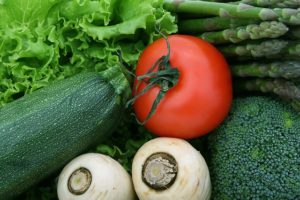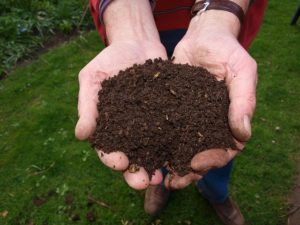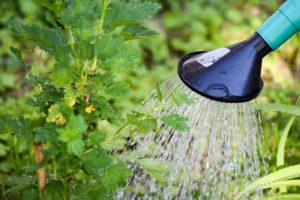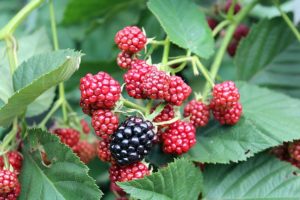 With Colorado’s 2017-2018 snow pack at record lows, we’ll likely face drought conditions for the 2018 growing season. You can still enjoy a fruit or vegetable garden, however, as long as some watering is allowed by your municipality.
With Colorado’s 2017-2018 snow pack at record lows, we’ll likely face drought conditions for the 2018 growing season. You can still enjoy a fruit or vegetable garden, however, as long as some watering is allowed by your municipality.
It’s important to conserve moisture by following these tips:
- Amend your soil. Use decomposed organic matter, such as compost, to enhance its water retention and
 microbial activity. You can make your own compost, buy it in bags at a reputable garden center, or order it by the yard at a landscape supply company. If you use animal manure in your compost or by itself, follow these guidelines to avoid possible E. coli contamination.
microbial activity. You can make your own compost, buy it in bags at a reputable garden center, or order it by the yard at a landscape supply company. If you use animal manure in your compost or by itself, follow these guidelines to avoid possible E. coli contamination. - Choose drought-tolerant plant varieties. Squash, cucumbers, and even tomatoes have drought-resistant relatives. Check this University of California list for specific varieties.
- Mulch as needed. Mulch conserves water, moderates the soil temperature, and prevents moisture-sucking weeds. You can use untreated grass clippings, weed-free straw, or plastic sheeting, according to Colorado State University’s Mulches for the Vegetable Garden.
 Water wisely. Water by hand or use ground-level irrigation, such as drip systems and soaker hoses, to reduce evaporation. Also, water during the cooler times of day (morning and evening). Don’t water willy-nilly; stick your index finger into the ground to the second knuckle to check for dryness before watering plants. If no watering is allowed, don’t plant a garden. Instead, plant a few containers. See CSU’s Home Vegetable Garden Management During a Drought in Colorado and Vegetable Gardening in Containers for more information.
Water wisely. Water by hand or use ground-level irrigation, such as drip systems and soaker hoses, to reduce evaporation. Also, water during the cooler times of day (morning and evening). Don’t water willy-nilly; stick your index finger into the ground to the second knuckle to check for dryness before watering plants. If no watering is allowed, don’t plant a garden. Instead, plant a few containers. See CSU’s Home Vegetable Garden Management During a Drought in Colorado and Vegetable Gardening in Containers for more information.- Use shade when you can.
 Some vegetables, such as salad greens, cabbage and rhubarb, grow well in shade, where soil doesn’t dry out as quickly as it does in the sun. In addition, some fruits will tolerate part shade. Examples include blackberries, raspberries, currants and alpine strawberries. So, tuck some of these plants into shady spots that might otherwise go unused. Or use a shade cloth to reduce evaporation.
Some vegetables, such as salad greens, cabbage and rhubarb, grow well in shade, where soil doesn’t dry out as quickly as it does in the sun. In addition, some fruits will tolerate part shade. Examples include blackberries, raspberries, currants and alpine strawberries. So, tuck some of these plants into shady spots that might otherwise go unused. Or use a shade cloth to reduce evaporation.
By: Deb Courtner, Colorado Master Gardener volunteer in Larimer County


The tip of using your finger to test soil dryness– up to the second knuckle — is one I’ve not tried before!
Perfect timing, I’m planning my garden this weekend.